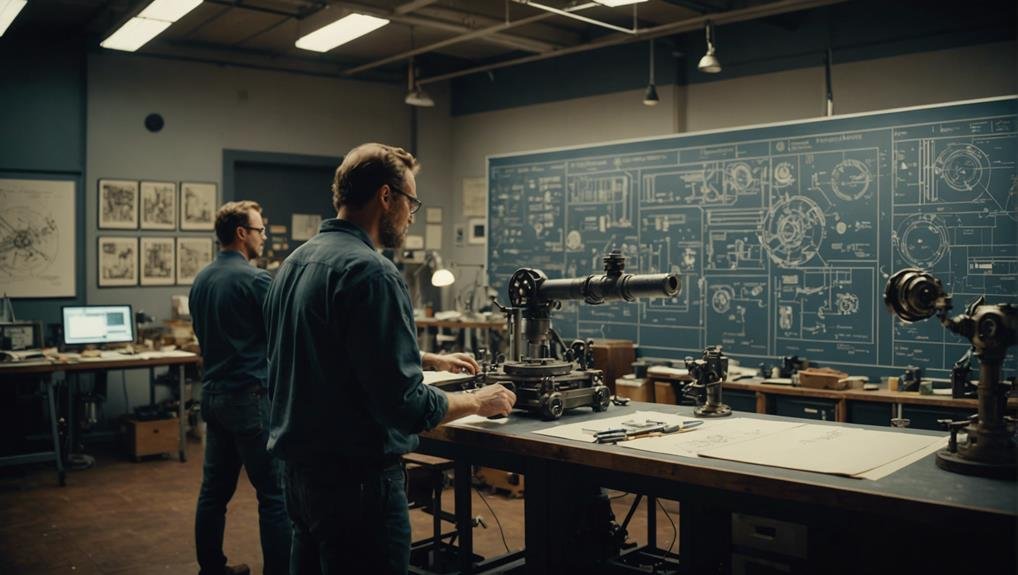True innovation often stems from enhancing existing ideas rather than starting from zero. Take 'The Toaster Project,' for instance, which demonstrated the complexity behind seemingly simple modern inventions. Just as feathers evolved from scales and the Wright brothers refined gliders into airplanes, small improvements can lead to significant advancements. Building on proven concepts minimizes risk and encourages sustainability.
It's crucial to understand the interplay of various components within a system. By concentrating on incremental improvements and learning from nature and successful business practices, we can develop robust, innovative solutions. These principles apply broadly and can transform how we approach problem-solving and growth.
The Toaster Project
Despite early progress, Thomas Thwaites' 'The Toaster Project' hit major roadblocks, especially when it came to sourcing crude oil for the plastic casing. Thwaites reached out to BP for crude oil, but they turned him down, putting him in a tight spot.
Without crude oil, he had to improvise. He opted to melt down old plastic scraps to make the casing, showing real ingenuity. However, the final product was far from ideal. The toaster ended up looking like a melted cake, underscoring the immense challenges of recreating modern technology from basic materials.
This project highlighted the complexities and interdependencies of everyday objects, revealing just how tough it is to produce them from scratch.
Don't Start From Scratch
Don't Start From Scratch
The challenges faced in The Toaster Project highlight a key lesson in innovation: starting from scratch is often unnecessary. Many great ideas are built on the foundations of existing ones.
Take birds' feathers, which evolved from reptilian scales, for example. Human flight is another case in point— the Wright brothers' success came from improving earlier aviation efforts. Making small, steady improvements usually proves more effective than a complete overhaul.
In business and technology, focusing on incremental progress can lead to significant advancements over time. By building on existing knowledge, innovators can achieve meaningful progress without the daunting task of reinventing the wheel. This approach not only conserves time and resources but also promotes continuous improvement and sustainable innovation.
Iterate, Don't Originate

Iterate, Don't Originate
In our fast-paced world, it's often more practical to build on existing ideas rather than trying to come up with completely new concepts. Improving proven ideas allows us to refine what already works, reducing risks and using existing knowledge. By focusing on iteration, we can make steady improvements and achieve better results without starting from zero.
- Efficiency: Iterating saves time and resources.
- Risk Reduction: Established ideas provide a reliable base.
- Continuous Improvement: Small changes can lead to big progress.
- Practicality: Proven concepts are easier to apply.
- Sustainability: Iteration supports long-term innovation.
This approach not only respects the web of existing innovations but also empowers us to make meaningful advancements.
Steven Banks once said: 'The key to long-term business success is not just in creating something new, but in continuously improving what you already have.'
Recognizing Interconnectedness
Understanding the Interconnectedness of Modern Systems
Recognizing the interconnectedness of modern systems reveals the hidden complexities that contribute to the success of established ideas.
Seeing these connections helps us understand how various elements work together, often in unseen ways. When we only focus on the final product, we overlook the myriad processes and components that make it possible.
Building upon what already works can be more effective than starting from scratch.
Old ideas have survived because they are robust and time-tested. By iterating on these ideas, we can create innovative solutions that are both reliable and efficient.
This approach leverages existing strengths and minimizes risks, offering a strategic advantage in both business and life.
Applying Evolution

Applying Evolutionary Principles in Business and Life
Understanding interconnectedness allows us to use evolutionary principles to create sustainable and innovative practices in both business and daily life. Evolution shows that small, gradual changes often lead to significant progress. This method encourages resilience and adaptability in business and personal growth.
Focus on Small Improvements
Make continuous, small enhancements. Over time, these small steps can lead to substantial progress.
Build on Existing Success
Use successful ideas as foundations for new initiatives. This reduces risk and leverages proven strategies.
Embrace Adaptability
Flexibility is key to evolving with changing conditions. Being adaptable ensures you can adjust to new challenges and opportunities.
Develop Resilience
Create strategies that can withstand disruptions. Resilience helps you recover and thrive despite setbacks.
Learn from Nature
Observe nature's processes and incorporate them into your practices. Nature's solutions are often efficient and time-tested.
By integrating these principles, you can foster a more resilient and innovative approach to both business and personal growth.
Custom Quote
'Success in business and life often comes from the ability to adapt and build on small, consistent improvements.' – Steven Banks
Conclusion
The Power of Incremental Innovation
Innovation often thrives on improving existing ideas rather than starting from scratch. About 95% of all patents focus on enhancements of previous inventions, which highlights the strength of gradual progress. By appreciating the link between ideas and making small, steady improvements, significant advancements become more reachable.
For instance, the Wright brothers didn't invent flight but refined existing concepts to create the first successful airplane. Similarly, bird feathers evolved from reptilian scales through minor changes over time. Embracing this evolutionary approach in innovation promotes resilience and growth, showing that consistent, incremental improvements can lead to major breakthroughs.
